
The Benefits Of A Wireless Mouse

Comparing a wireless mouse to a wired one, there are various advantages. The following are some benefits of utilizing a wireless mouse:
Greater mobility:
The absence of a physical cable makes it easier and more comfortable to maneuver the wireless mouse. If you have a large monitor or prefer to use your computer from a couch or bed, being able to operate it from a distance without being constrained by a cord can be helpful.
Reduced desk clutter:
One of the most obvious benefits of a wireless mouse is the reduction of desk clutter caused by cables. You have a more tidy and organized workspace since there are no wires to deal with. Both productivity and aesthetic can be improved by doing this.
Mobility:
Compared to wired mice, wireless mice are typically more mobile. They are practical for tourists and people who frequently work on the go because they are simple to pack and transport. The portability of wireless mice is further increased by the inclusion of a small USB receiver that can be stored inside the mouse itself.
Compatibility and simple setup:
Setting up a wireless mouse is normally simple. The majority of wireless mice employ plug-and-play technology, making it possible to connect them to your computer without installing any additional programs or drivers. Wireless mice can also be used with Windows, macOS, and Linux, among other operating systems.
Flexibility in placement:
A wireless mouse gives you the freedom to place it in an ergonomically and comfortably suitable location. When using a computer for extended periods of time, you can choose the hand position that is most comfortable for you and freely alter the mouse's position to suit your tastes.
Reliable connectivity:
Modern wireless mouse link to the computer in a consistent and reliable manner using modern radio frequency (RF) or Bluetooth technologies. Issues with interference are reduced, giving a seamless and uninterrupted experience.
Enhanced visual appeal:
Wireless mouse frequently include elegant and sleek designs that give your computer setup a contemporary feel. They come in a variety of hues and forms, so you may select one that complements your style.
Despite these benefits, it's important to remember that wireless mice have certain drawbacks. They need rechargeable power sources or batteries, which must be routinely changed or refilled. Some wireless mice may also have latency or connectivity concerns, though these issues have considerably decreased as a result of technological developments.
Better ergonomics:
Wireless mice allow for more placement and usage flexibility. A more ergonomic configuration is possible by placing the mouse wherever your hand and arm feel most at ease. Better long-term health may result from lowering the risk of repetitive strain injuries (RSIs).
Convenience and usability:
Wireless mice are easy to use, particularly when switching between various devices fast. A few wireless mouse have the ability to connect to and control several devices, including laptops, tablets, and even smartphones, all at once. This adaptability can be especially useful in professional settings or during presentations.
No tangling or snagging:
Unlike wired mice, wireless mice do not have a cord that can tangle or snag. If you frequently move your mouse or have a small workspace, this can be extremely helpful. Without having to worry about the cable becoming tangled up in anything, you may move freely.
Flexible compatibility with surfaces:
Wireless mice typically function well on a range of surfaces, including tables, mouse pads, and even some unusual surfaces like couches or carpets. Because of this adaptability, you can use the mouse without a specific surface or mouse pad in a variety of settings.
Reduced desk wear and tear:
Using a wireless mouse eliminates the need to worry about the cord rubbing against the desk surface repeatedly, which can over time result in wear and tear. This could prolong the life and aesthetic appeal of your desk.
Benefits for gaming:
Wireless gaming mice have advanced significantly in terms of performance and dependability. Today, a lot of wireless gaming mice come with customizable features, low latency, and great precision, which makes them ideal for gamers who desire the mobility of wireless connectivity without compromising gaming performance.
Noise reduction:
Silent click technology is used by some wireless mice to lessen or completely remove the clicking sound that occurs when the mouse buttons are pressed. This can be useful in calm areas where reducing noise is vital, such as libraries or shared offices.
Compared to wired mice, wireless mice offer more comfort, adaptability, and mobility. Even while they could have a few small downsides, technological improvements have greatly enhanced their performance and durability, making them a preferred option for many computer users.
A wireless mouse can make it simpler to exchange control between several users if you frequently share your computer with others or operate in a collaborative environment. Without the trouble of untangling or moving cords, you may easily unplug a wireless mouse from one computer and attach it to another.
Minimal desk damage:
Because of the constant friction caused by wired mice, particularly those with braided or thick cables, your desk may occasionally sustain scratches or other surface damage. As there is no cord to rub against the surface with wireless mice, this problem is resolved, helping to maintain the appearance and condition of your workspace.
Options for accessibility:
Wireless mice frequently have extra functionality and programmable or customized buttons. Because they may map certain shortcuts or functions to mouse buttons for simpler navigation, they are appropriate for people with specific accessibility needs.
Reduced chance of unintentional cable disconnections:
If the cable is pushed or tugged, wired mice are more likely to disconnect accidentally. This can be annoying, especially when working on important projects or playing games. The risk of unintentionally disconnecting the mouse is eliminated when using a wireless mouse, resulting in a more seamless and uninterrupted experience.
Power-saving features:
To increase battery life, many wireless mouse have these functions built in. They frequently have built-in sleep modes or auto-off features that start up after a certain amount of inactivity. This lessens the need for frequent battery replacements or recharging by conserving battery power and extending the battery's overall life.
Cable management and aesthetics:
Since wireless mice do not require cable management, the workspace is cleaner and more aesthetically pleasing. You may arrange your workplace in a more organized and clutter-free way because you don't have to bother about hiding or managing the mouse cord.
To be aware that while wireless mice have many advantages, they might not always be the best option. Because of its reliable connection, absence of power dependence, or specific performance needs, certain users may still favor wired mice. When deciding between a wireless or wired mouse, it's crucial to take your individual preferences and demands into account.
Versatility and adaptability:
Wireless mice work with a variety of gadgets besides PCs. With gadgets that allow USB or Bluetooth connectivity, they can be utilized with computers, tablets, smart TVs, and other electronics. Because of its adaptability, the mouse may be used with a variety of devices, giving you a dependable and comfortable experience.
Presentations without cables:
A wireless mouse might be very practical if you frequently give presentations or need to manage your computer from a distance. You can navigate your slides or engage with the material on your screen while standing at a suitable distance or moving about the room.
Reduced cable wear and tear:
Over time, wired mice's cables can deteriorate, particularly where they connect to the mouse. As a result, the cable may become frayed or broken, which may reduce the mouse's lifespan and functionality. A wireless mouse reduces the possibility of cable damage, resulting in a more robust and long-lasting gadget.
Simple maintenance and cleaning:
Compared to wired mice, wireless mice are typically simpler to clean and maintain. Since there are no cords present, you can quickly clean the mouse's surface with compressed air or a damp cloth without having to worry about tangling or harming the cable.
Convenience in constrained spaces:
A wireless mouse can be very helpful when you have a small desk or must operate in a small location. You have more freedom to move the mouse around without being constrained by a cable, enabling smoother and more accurate handling.
Many wireless mice have battery life indicators built in, either in the form of LED lights or software alerts. These indications let you know when the batteries need to be changed or recharged, preventing unexpected power outages while working on crucial activities.
Functionality that can be customized:
Wireless mice frequently come with software or supplemental apps that let you alter their settings and functionality. You can alter the sensitivity settings, give buttons macros or shortcuts, and (if applicable) even customize the mouse's lighting effects. Your productivity and user experience could be improved by this adjustment.
Integration with wireless charging technology:
Some wireless mice are compatible with wireless charging, which completely does away with the need for batteries or cords. The bother of changing batteries or plugging in a charging cable is reduced when using compatible charging pads, which allow you to just place the mouse on the pad to recharge it wirelessly.
Future-proofing:
More gadgets are switching to wireless communication as technology develops. By choosing a wireless mouse, you are following current fashion and ensuring compatibility with upcoming gadgets that can give priority to wireless connections.
Numerous advantages of wireless mice are available to suit various user preferences and requirements. When choosing a wireless mouse, it's crucial to take into account aspects like battery life, latency, and general performance to make sure it suits your individual needs.
Flexibility in workspace organization:
A wireless mouse gives you the freedom to set up your workplace however you choose. Without being constrained by the length of a wire, you can simply move your mouse, swap between left- and right-handed usage, or change the distance from your computer.
Convenience for presentations and travel:
Wireless mouse are especially practical for those who frequently present or travel. You may take them with you everywhere you go and use them with various devices because they are lightweight and portable. You don't need to worry about cords or compatibility whether using your wireless mouse in a hotel room, conference room, or client's workplace.
Reduced desk clutter when cleaning:
Using a wireless mouse saves you the trouble of dealing with a tangled cable when it comes time to clean your desk or workspace. The mouse is simple to pull aside or momentarily remove from the desk, making cleaning more effective and comprehensive.
Wireless mice have improved in terms of resilience and durability. The possibility of damage from a cable bending or snagging is decreased when there isn't one. Some wireless mice are also made of durable materials and structure that can survive normal wear and tear.
Large-screen gaming:
If you play games on a large monitor or multiple monitors, a wireless mouse can make your experience more enjoyable. With more mobility, you can move around the screen without being hindered by cables, giving you more precise control and lowering the possibility of cable drag.
Seating flexibility:
Wireless mouse are perfect for circumstances in which you want to control your computer from a distance or in a more relaxed seating position. A wireless mouse enables you to control your computer from any comfortable position, whether you're lying in bed, reclined in a chair, or sitting on the couch.
Convenience for home theater setups:
A wireless mouse might be a useful addition if you have a media center or a home theater PC. It is possible to control your computer wirelessly or from a distance, doing away with the requirement for a cable connection and enabling a fluid multimedia experience.
Reduced chance of cable damage during transport:
If a wired mouse cable is not handled carefully when traveling a laptop or computer, it may be susceptible to damage or bending. With a wireless mouse, you can keep your mouse in top condition while reducing the chance of cable damage during transit.
Wireless mice help your desk look neat and simple, which improves the aesthetics of minimalist installations. If you choose a minimalist or modern design aesthetic, the absence of cables helps maintain a clutter-free and aesthetically pleasant setup.
When selecting a wireless mouse, keep in mind to take into account elements like battery life, connectivity range, and device or operating system compatibility. Picking a reliable brand and model that suits your unique requirements and preferences is crucial.
Mobility and convenience while delivering presentations:
A wireless mouse provides exceptional mobility and convenience when giving presentations or running meetings. You still have complete control over your slides or content even if you wander around the room or stand far from your computer. This makes it possible to have a more dynamic and interesting presentation experience.
Flexibility in multi-monitor configurations:
If you have a multi-monitor configuration, a wireless mouse enables effortless screen switching without the restriction of a cable. Working with several apps or viewing large spreadsheets or documents becomes more effective thanks to the ease with which you can switch between monitors and move the mouse across various displays.
Wireless mouse are especially suitable for Home Theater PC (HTPC) and media center setups, making them ideal for use with these devices. There is no need for a wired connection when you can easily control your computer or media player from your couch or viewing area. It is now simpler to explore media collections, streaming services, and multimedia material thanks to this convenience, which also improves the whole entertainment experience.
Compatible with USB hubs and adapters:
Wireless mice can be connected more conveniently by using USB hubs and adapters. This is particularly helpful if your computer only has a small number of USB ports or if you're using a laptop or other device that could need additional peripherals. The wireless mouse receiver can be connected to a USB hub or converter, enabling the operation of numerous devices at once.
Easy collaboration and sharing in offices:
Wireless mice make collaboration and sharing easier in offices where numerous people must use the same computer or workstation. Without the restrictions of a connection, it is simple to transmit the mouse between users, enabling more seamless transitions and effective teamwork.
Silent operation:
Some wireless mice feature a silent click mechanism that lessens or completely eliminates clicking sounds when the mouse buttons are pressed. In quiet locations or circumstances when noise reduction is desirable, such as shared workspaces or late-night usage in calm areas, this capability may be useful.
Gaming without limitations due to cables:
In recent years, wireless gaming mouse have advanced significantly, providing competitive performance for gamers. They provide you the ability to move around and respond fast without being constrained by a cord. In order to be a competitive alternative for gaming, a lot of wireless gaming mice now come with low latency, high DPI (dots per inch), programmable buttons, and configurable capabilities.
Some wireless mouse have the ability to offer advanced features and motions. These mouse might have touch-sensitive surfaces, gesture recognition technology, or extra buttons with programmable functionalities. This promotes improved efficiency in jobs requiring complex interactions, easier access to shortcuts, and more natural navigation.
Compact designs for wireless mice increase portability Wireless mice frequently have small, ergonomic designs that increase portability. They are practical for people who frequently travel or work while on the go because they fit conveniently into laptop bags, backpacks, or pockets. You can always have a dependable pointing device thanks to the small form factor.
When choosing a wireless mouse, keep in mind to take into account aspects like battery life, connectivity range, and ergonomics. It's critical to choose a mouse that feels good in your hand and satisfies your unique performance and functionality needs.
Less desk clutter:
By using a wireless mouse, you may get rid of the mess that cords on your desk produce. In addition to making the workspace cleaner and more orderly, this also makes it simpler to move objects without tripping over cables.
A wireless mouse and keyboard can be used together seamlessly for a clutter-free experience if you use a wireless keyboard. You can arrange your workspace more neatly and tastefully since there aren't any cables crossing your desk.
Flexibility for left-handed users:
Wireless mice give left-handed users more options. The majority of wireless mice are ambidextrous or feature ergonomic forms that can be used by those who use both their left and right hands. This makes it so that everyone can choose a mouse that is cozy and appropriate for their favorite hand.
Wireless mouse offer free movement without the restrictions imposed by a cord, with no cable interference or drag. The whole user experience is improved by the smoother and more accurate cursor control made possible by the absence of cable interference or drag.
Reduced possibility of cable damage while transporting your laptop or computer:
Using a wireless mouse minimizes the possibility of cable damage that can happen with wired mice. The wireless mouse is easily detachable and may be packed separately to ensure its longevity and preservation.
A wireless mouse offers improved portability for laptops and tablets, which is a benefit if you use one of these devices as your main computer. When you require accurate pointing and control, whether you're working in a coffee shop, library, or on a plane, you can effortlessly tuck the little wireless mouse into your bag.
Freedom from cable length restrictions:
A wireless mouse frees you from cable length restrictions. The mouse is easy to operate at a distance, giving you more freedom to move and position yourself. When you need to operate a computer or engage with content without being physically close to the screen, this is quite helpful.
Quick and simple setup:
Setting up wireless mice is usually simple. Typically, all that is required to get started is plugging in the wireless receiver or pairing the mouse with Bluetooth. Wireless mice are a practical option for those who desire a hassle-free setup approach because of their simplicity.
Improved aesthetics for a contemporary workspace:
Wireless mice help to make your workspace look cleaner and more contemporary. Your desk will look neater and more appealing without the mess of cords, which can improve your productivity and the atmosphere at work.
Greater durability in specific circumstances:
In environments where cables may be vulnerable to damage, wireless mice may be more durable. A wireless mouse, for instance, removes concerns like cable tangling or unintentional tugging if you operate in a setting with dogs or where there is a risk of these things happening. This makes it a more durable and trustworthy solution.
Be aware that while wireless mice have many advantages, their batteries do need to be changed or recharged on a regular basis. To ensure continuous use, it's crucial to maintain battery life and have extra batteries or charging methods available.
You can select the top-rated wireless (gaming) mouse from this list.









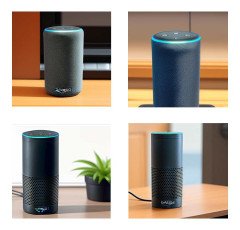


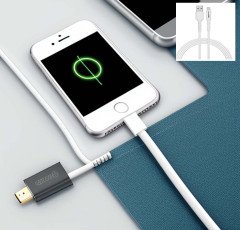



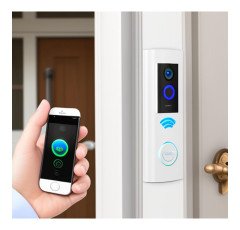
















 TitTok Revolution
TitTok Revolution  Home Decor Items
Home Decor Items  Hot Bags For Pain Relief
Hot Bags For Pain Relief  Wristbands
Wristbands  Men Clothing
Men Clothing  Favorite Company (Cuelinks)
Favorite Company (Cuelinks)  Hanging Lights For Living Room
Hanging Lights For Living Room  Rakhi
Rakhi  Door Handle Collection
Door Handle Collection  Realme Smart Phone
Realme Smart Phone  Apple iPhone
Apple iPhone  4k Projector For Home
4k Projector For Home  SEO Checklist
SEO Checklist  Online Technology Classes
Online Technology Classes  Dell Laptop
Dell Laptop  Women Fashion
Women Fashion  The Click Engine
The Click Engine  NordVPN
NordVPN  Wireless Bluetooth Earphones
Wireless Bluetooth Earphones  RPM 3.0
RPM 3.0  Smart Watches
Smart Watches  Graphics & Design
Graphics & Design  Kitchen Tap
Kitchen Tap  Essentials for Gamers
Essentials for Gamers  Pet Care Products
Pet Care Products  Samsung Mobile
Samsung Mobile  Digital Voice Recorder
Digital Voice Recorder  Unlimited access to classes on illustration, photography, design, film, music
Unlimited access to classes on illustration, photography, design, film, music  Best Phone
Best Phone  Kitchen Daily Use
Kitchen Daily Use  Stylish Sneakers by Red Tape
Stylish Sneakers by Red Tape  Artificial Intelligence
Artificial Intelligence  ELECTRONIC ACCESSORIES
ELECTRONIC ACCESSORIES  ASUS Laptop
ASUS Laptop  Best Selling Books
Best Selling Books  Adidas Shoes
Adidas Shoes  Dual USB Car Charger
Dual USB Car Charger  HP Laptop
HP Laptop  NordLocker
NordLocker  iPhone cable
iPhone cable  LCD Writing Tablet
LCD Writing Tablet  Unreal Engine 5 For Beginners Learn The Basics Of Virtual Production
Unreal Engine 5 For Beginners Learn The Basics Of Virtual Production  Wall Lamp
Wall Lamp  1150+Trendy kids coloring pages Bundle
1150+Trendy kids coloring pages Bundle  SOFAS
SOFAS  Best Home Appliances
Best Home Appliances  Only For The United States
Only For The United States  Hello Theme
Hello Theme  Best Sellers On Amazon
Best Sellers On Amazon 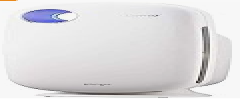 Air Purifier for Home
Air Purifier for Home  NordPass
NordPass  Acer Laptop
Acer Laptop  Echo Dot - Smart speaker with Alexa
Echo Dot - Smart speaker with Alexa  Best Robotic Vacuum Cleaners
Best Robotic Vacuum Cleaners  Top Rated From Amazon
Top Rated From Amazon  Crocs
Crocs  Creative Brief For Video Shoot
Creative Brief For Video Shoot  BEST SELLER TOP10
BEST SELLER TOP10  Healthy Ingredients
Healthy Ingredients  Amazon Best Selling Products
Amazon Best Selling Products  Online Marketing
Online Marketing  The Secret Email System
The Secret Email System  Wireless Gaming Mouse
Wireless Gaming Mouse  ASPINAL LONDON
ASPINAL LONDON  Prime Video
Prime Video  All Wireless Products
All Wireless Products  Sennheiser
Sennheiser  One World Collection
One World Collection  Puma (Clothing & Accessories)
Puma (Clothing & Accessories)  Bathroom Mirrors
Bathroom Mirrors  Duke T Shirts
Duke T Shirts 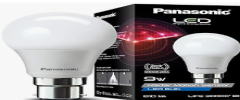 Motion Sensor Light
Motion Sensor Light  Smart Doorbell
Smart Doorbell 


















